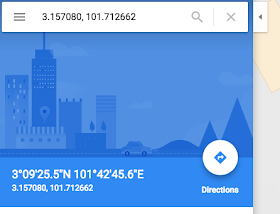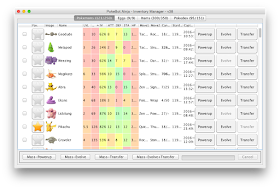
After selling my last smartwatch the Moto 360, I was without a smartwatch for a while. I thought I could live without a smartwatch but somehow I got this empty feeling in my soul. Every time I get a notification on my phone, I kept glancing at my wrist expecting to see them there but alas I only got a regular digital watch on. The thought of taking out my phone to actually see them new messages feels like too much of a bother for me. I know it sounds rather lame but that’s how you feel after using a smartwatch for a while.


So I went again into the market looking for that perfect fit smartwatch. The perfect smartwatch for me at the moment would still be the Moto 360 but with a thinner design, no black flat tyre at the bottom and extra long battery life. The next best thing would be the Apple watch because it’s Apple. It’ll work seamlessly with my iPhone but I can’t bring myself to spend upwards of 1,000 ringgit for one. Hence that leaves me with the grand daddy of smartwatches - Pebble.

As always I made an extensive research on the Pebble smartwatch before deciding to purchase it. One thing for sure it has none of the flash and dazzle of an Android Wear but for it’s low price point (lower than the cheapest Android Wear at least), the Pebble smartwatch offers everything you need and expect of a smartwatch. Now there are 5 types of Pebble watches in the market, the cheapest one is the Pebble Classic and the slightly newer one is the Pebble Time which is the one I finally bought. The Classic is too clunky and cheap-ish looking in my opinion and while I’m tempted to get the Time Round, it is a tad too expensive for my budget and I think the bezel is too thick for my liking. So Pebble Time it is.

Since there is no local distributors for the Pebble brand, you have to either buy it direct from the Pebble website or a third party reseller like Lazada et al. As usual since it’s shipped from overseas, expect a few weeks for it to arrive to your doorstep. Yes you can opt for the in stock local shipment but prepared to pay at least 200 ringgit more for the convenience. The one that I got cost RM629 from Lazada which is roughly the same price as the Pebble website but was currently out of stock at that time. If you’re on a tight budget, you can always look for one on online marketplace websites like Mudah.my for around 500 ringgit.


So how does it fare? First impressions - I love the minimalist design, the lightweight and also the simplistic user interface. The Pebble Time uses an always on 64 color epaper technology on its screen unlike the LCD or TFT screen of the regular Android Wear watches. One benefit of this screen that it uses a lot less battery hence why the Pebble Time’s battery is advertised to last up to a week. The screen looks great and clear under sunlight but in darker places you will have trouble reading the screen unless you adjust the angle of the watch to reflect sunlight or a light source. But isn’t there a backlight display on this watch? Of course it has but the display doesn’t easily lit up and you need considerable force (if you’re not careful you might hurt your arm) in twisting your arm to turn on the backlight. The other way to turn on the light is of course by pressing any one of the 4 buttons on the watch.

The Pebble Time uses Gorilla Glass screen which is supposed to be tough and on par with smartphones but I would still advise you to use a screen protector of some sort. Especially to retain the resale value in case you’re planning to sell it off some day. The screen protector is virtually non-existent in local gadget or watches stores and I had to order them online and wait 20 days for the overseas delivery to arrive.

There’s 4 physical button on the watch, the single back button on the left side and the 3 up, select and down button on the right side. The back button as the name suggests brings back the interface to the previous screen and ultimately to the watchface. Pressing the up button displays your footsteps and sleeping pattern for the entire week. Pressing the down button shows your calendar appointments apart from the default sunrise and sunset times. Finally, pressing the middle select button will show you the default apps like music, timer, stopwatch, weather and also other installed apps. You also access the settings, change the watchfaces or see old notifications from the middle button. If you came from Android Wear or WatchOS, it would feel a bit weird using the physical buttons on the Pebble but you’ll get used to it over time. The buttons are big and easy to press and after some time you’ll learn to appreciate navigating the watch’s interface with them.

Now how do you connect your Pebble watch to your phone? Pebble smartwatches is the first watch to support both Android and iOS since launch and although the iOS app doesn’t offer the full functionality of the Android app, it is good enough for my day to day use. For example you can send and reply text messages on Android instead of just reading them on iOS. You can make calls straight from your Pebble on Android. You can also interact with the hardware on Android, to do things like toggle wifi/bluetooth, mute mic, turn on speakerphone, and so on but not on iOS because of its closed ecosystem. So yeah if you’re using the Pebble exclusively with iOS there’s a lot of neat features that you’ll be missing (see the list here) but for a hardcore Apple fan like me, it doesn’t bother me that much for as long as I can get many of the core Pebble features on my iPhone working 😀.

As the pioneer of the smartwatch, the Pebble Appstore features a good variety of apps and watchfaces comparable to those on Android and iOS. There’s health fitness apps, games, companion apps to popular Android and iOS apps like ESPN, Pandora, RunKeeper, Uber and Foursquare just to name a few. To be honest I don’t have much of those apps installed on my Pebble cause I don’t see much use for them when I already have them installed on my phone. And the games, while they’re quite a number to choose from, trying to play Tiny Bird or Tetris on the Pebble is a pain in the ass (or finger) to put it mildly. In fact I don’t fancy playing games on any smartwatch be it Android Wear and especially Pebble because of the horrible user interface experience. Another thing, you can actually type from the watch but you’ll have to press the buttons up and down a hundred times to select the letters, it’s horrible. Reminds you how you the days before touch screen smartphones where you have to type a dozen numbers for a single letter? Yeah it’s those glory days all over again so I don’t know why anybody would want to do that.

Now on to the list of things I like and don’t like about the Pebble Time. I like how the watch gives me a soft but subtle vibration for all incoming notifications. It’s not too intrusive or strong, more like a little nudge to alert you of new messages etc. I like the variety and quality of the watchfaces created for Pebble. Sure they’re not HD or colourful as on the Android Wear but many of them are quite pleasant to watch and use. I love the retro square look of the watch. The screen size is not too big and fit just right on my wrist. I especially love the overall thinness of the watch, definitely thinner than the Samsung Gear and Moto 360 and definitely feel much more lighter than most Android Wear watches in the market. For once it feels like I’m wearing a normal wristwatch instead of a small (but heavy) computer on my wrist. Lastly I love the silicone strap that comes standard with the watch. It is easily detachable with a tiny lever and you can simply find another band of different colour or even steel and leather ones online. Other than that I also love the magnetic charging cable which connects easily to the Pebble.

What I don’t like about the Pebble Time. Although this Pebble offers a lot of watchfaces to choose from, I kinda miss the high definition looking watchfaces from Android Wear. Of course that HD look comes at the expense of short battery life, but my very own Pebble Time doesn’t last more than 4 days albeit with heavy use and notifications. So yeah 4 days is a lot longer than the average 8–10 hours I get on Android Wear but that comes from sacrificing HD display. Talking about battery life, when I first got the Time, it rarely got past 3 days (sometimes 2) from heavy use which is kinda frustrating since the advertised battery life is 7 days. However after following the troubleshooting tips from Pebble Support and updating the software to the latest version, it managed to last around 4 days currently.

So in a nutshell, if you’re looking for a flashy smartwatch with gorgeous screen and fancy graphics, go for one of the Android Wear or Apple watches. If you’re looking for something simple, practical, durable and has a long-ish battery life, the Pebble smartwatch is perfect for you. By now you should be able to get Pebble 2 and Pebble Time 2 which offers slightly thinner bezel and also heart rate monitor. The Pebble smartwatch offers most of the essentials features that you’d expect from a modern smartwatch minus the hefty price tag.
















